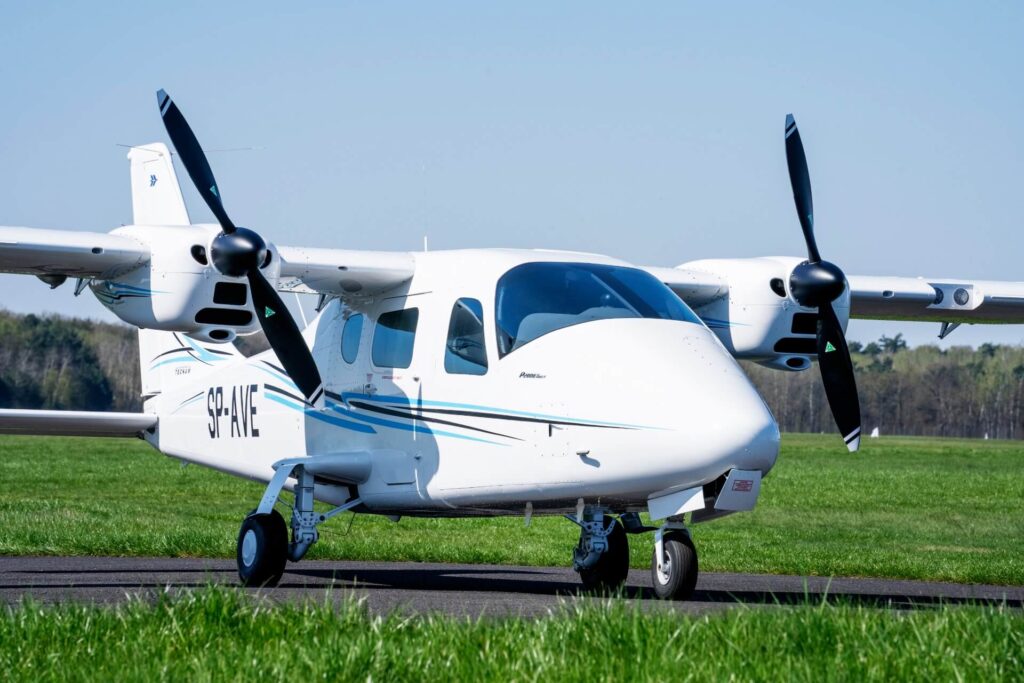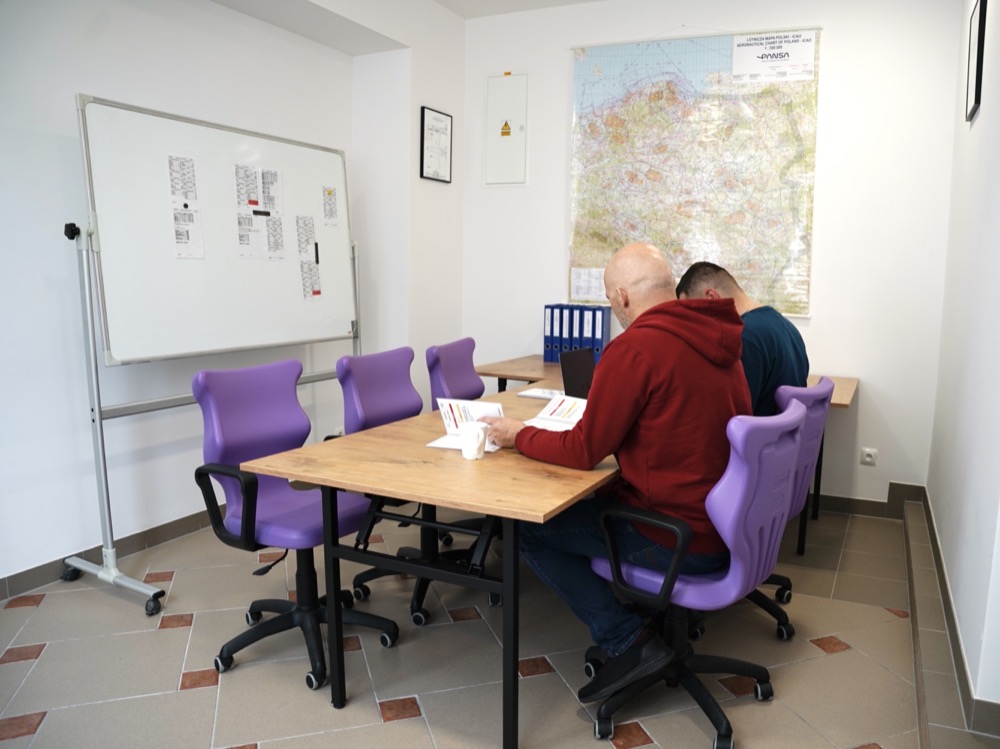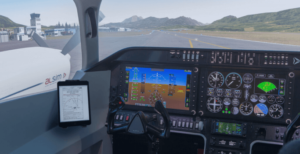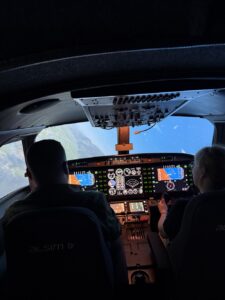Integrated training
Flight Instructor FI(A)
About the training
This course will enable you to obtain the qualifications of an EASA Flight Instructor. You will acquire the knowledge, skills, and authorisations required to train other pilots. The programme consists of both theoretical and practical parts and is designed for holders of a CPL(A) licence.
Requirements
- Over 18 years of age
- A valid Class 1 aeromedical certificate
- At least 10 hours of instrument flight training on the appropriate category of aircraft, of which no more than 5 hours may be instrument ground time on an FSTD device
- At least 20 hours of VFR cross-country flight time as pilot-in-command on the appropriate category of aircraft
- A valid EASA CPL(A) licence or a valid PPL(A) licence with theoretical knowledge for the CPL(A)
- A minimum of 200 hours of flight time on airplanes or touring motor gliders, including at least 150 hours as pilot-in-command

FI(A) training - step by step
What does the training program look like?
Theoretical part - 125 hours
- 25 hours of lectures
- 18 hours of lectures conducted by a candidate instructor
- 82 hours of topics to be discussed, integrated with practical training
Practical part – 30 hours of flight training with instructors
- 25 hours of training on a SEP(L) class aircraft
- 5 hours of flight simulator training
An internal exam
A state exam

Benefits of completing the training course
You will:
- Acquire the pedagogical skills necessary to teach other pilots effectively.
- Learn how to prepare training materials and present knowledge clearly.
- Learn to evaluate students, observe their achievements, and report on the results.
- Gain new opportunities to develop your professional career as an instructor in aviation schools, clubs, or as an individual teacher.
- Increase your professional experience and become more self-confident in your abilities.
- Learn to communicate and cooperate with students effectively, providing them with substantive feedback.
- Master key instructional techniques that will make the learning process easier and more effective.
- Obtain a flight instructor qualification, enabling you to work in various locations around the world and enjoy greater flexibility and professional mobility.
How long does FI(A) training take?
EASA Flight Instructor (FI) is a comprehensive training program that consists of a theoretical part and a flight with experienced instructors. During 155 hours of training, you will acquire instructor and pedagogical competences that will allow you to train other pilots. You will learn how to provide them with knowledge and assess their flight skills. During the theoretical part, you will learn the most important pedagogical principles, instructional techniques, aviation law and teaching psychology. You will immediately put the acquired knowledge into practice by practicing with qualified UnitedSky instructors.
125
hours of theoretical training
30
hours of flight training with an instructor
How much does FI(A) training cost?
Contact us to get the detailed training offer.
Why UnitedSky?
Expert instructors
Our instructors are experts and airline pilots who share not only their extensive experience but also their passion for flying.
Authentic training
We make sure our courses are fully tailored to your needs. We provide both knowledge and practical skills that will prepare you for real flight conditions.
Safety first, efficiency always
We care about pilots’ safety and professionalism, helping them fulfill their dreams of flying and building a career in aviation.
A wide range of experiences
We provide training on a variety of equipment in attractive locations: at Warsaw Towers and our training center in Ogonki, as well as at Babice and Modlin airports.
FAQ
Frequently Asked Questions
Training
If you want to teach other pilots and sign up for FI(A) training, you must have a valid CPL(A) commercial pilot license. The EASA Flight Instructor course expands the existing professional experience of every pilot. Therefore, to become a professional instructor, you need solid foundations and practical knowledge in the field of aviation.
After completing EASA Flight Instructor training, you receive FI(A) Restricted ratings. You can start working as an aircraft instructor under the constant supervision of another instructor. You can then train for both the PPL(A) license and the VFR Night rating.
Once you have achieved 100 hours of flight time as an instructor and supervision of at least 25 solo flights of your students, the restrictions will be lifted. Thanks to this, you will start working fully independently.
FI training is the first step on the instructor career path. To develop further and gain further qualifications, you can train for aircraft class (CRI), instrument flight (IRI) or multi-crew flight (MCCI). After obtaining 200 hours of flight time as an instructor, you can conduct training as part of professional license courses (FI CPL), while exceeding the threshold of 500 hours allows you to train candidates for instructors (FI FI).
Lectures and stationary classes take place in our office, on the 11th floor of the Widok Towers skyscraper, in the very heart of Warsaw. We conduct practical training at the Warsaw airports: Babice and Modlin.
The theoretical part of the FI course consists of as many as 125 hours of study. We have created an innovative training program that will deepen your skills and ensure high effectiveness.
The theoretical part is:
- 25 hours of on-site training (theory of learning and teaching)
- 18 hours of lectures conducted by a candidate instructor;
- 82 hours of issues discussed in parallel during practical exercises
Classes are held in small groups, so students have direct contact with the instructor. The theoretical training ends with an internal examination, which allows you to take part in the practical part.
The practical part of the FI training is 30 hours of exercises and flights with an instructor:
- 25 hours of training on a SEP(L) class aircraft
- 5 hours of training on a flight simulator
After completing the training, you will receive a certificate that allows you to take the state exam
The total time of Flight Instructor training is 155 hours (125 hours of theory + 30 hours of practice).
Wymagania
It all depends on the type and extent of the defect. If the defect was detected during medical examinations, you probably need to use correction and wear glasses. It is essential to carry a spare pair with you during flight operations. The permissible limit value of vision defect is -5 diopters. If the defect worsens, Polish legal regulations prohibit further work as a pilot.
Age: Pilot age restrictions vary by license type. In the case of training for a PPL(A) tourist aircraft pilot license, you must be 16 years old before starting the theoretical part and 17 years old before taking your first flights.
In order to obtain a CPL(A) commercial pilot license, the minimum age is 18 years.
For an ATPL transport aircraft pilot license, the minimum age is 21 years.
The maximum age for a pilot is 65 years, with the possibility of extension to 70 years, provided that regular medical examinations and health requirements are met.
Weight: There are no regulations regarding the minimum and maximum weight of a professional pilot. However, class 2 obesity (with a BMI over 35) may be a problem.
Height: There are no regulations regarding the minimum and maximum height of a commercial pilot.
The European Union Aviation Safety Agency (EASA) sets health requirements for the pilot profession. Detailed guidelines can be found here.
Before registering for training, we recommend a doctor’s visit and check-ups to make sure that there are no contraindications to work in the profession. Before taking the tests and starting the course, factors such as obesity, diabetes, heart and circulatory system function, neurological problems and fainting should be taken into account. The research also assesses mental health.
Payments
The price for the Flight Instructor course is EUR 8,000.
Before making a payment, please contact our office in advance. You will receive a message from us confirming receipt of your application and further details.
Payment for the training can be made via bank transfer. To reserve a place on the course, you must pay an advance payment of EUR 1,000.





